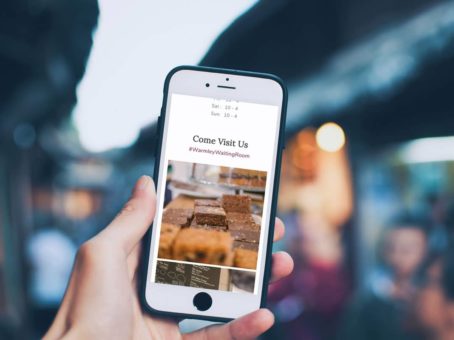
Whether it operates online, offline, or both, it’s hard to disagree that every business needs a fantastic website. After all, it’s the de facto hub of a company’s operation — ideally, it should clearly set out what the company does, how it works, and why it’s worth the visitor’s time and money. Settling for a mediocre website doesn’t just fail to deliver upon this potential: it also gives a strong impression that the company is indifferent (or even outright incompetent).
Do you really want people landing on your homepage to think that about your business? Obviously not. You want to impress people and have your website serve as a powerful lead-generation tool. So how do you manage that? Well, there are various things you need to get right: your layout, your design, your loading times, and your features, to name just some.
In this piece, though, we’re going to look at something that often gets overlooked — and that’s website copy. Your website can look great and work well, but if the copy is below par, it won’t get you very far. In this time of brand scepticism, your website content needs to be meaningful. To help you achieve that, let’s take a look at some relevant tips:
Set the stage immediately
Given the titular use of the word “instantly”, the page heading needs to get some attention first, because it sets the scene for the visitor. First website impressions are always significant. If your website looks bad (or simply confusing) upon first glance, then many visitors will mentally check out before they actually read through any of your content. Start as you mean to go on.
The key to writing outstanding headings is to cut to the heart of what you’re offering. Why is the visitor on your site? What can you give them? Let’s take this site as an example: the heading reads “Bristol based web designer and developer”, which neatly and unambiguously explains the nature of the website. If it read something vague like “Fantastic websites”, then the visitor would be uncertain (“Do you make fantastic websites, or host fantastic websites, or just talk about fantastic websites?”). A lack of clarity is to be avoided.
Use imagery for highlighting
Forget any notion of sticking entirely to text. Images catch the eye more strongly than text ever can, and can communicate concepts very powerfully: this is why every brand needs a great logo, but it’s also why adding relevant visuals is extremely important for creating excellent digital content. Subtle cues (such as arrows or connecting lines) can communicate the relationship between two pieces of copy. A clear image can provide immediate context for a particular section, making it massively easier to digest.
This doesn’t mean that you need to cram stock images into every page of your website for the sake of it. It’s mainly about adding clarity. Read through the text in isolation, and answer this question: would the meaning be easier to discern if you framed it well using relevant images? If so, you should think about how you could restructure the page with some clarifying visuals.
Add elements of storytelling
Narratives have a lot of power, and you can use that power to your advantage through your website copy. Consider how flat and businesslike many websites seem. Being “businesslike” has taken on such a negative connotation because it inspires boredom. You know perfectly well that companies ultimately want your money, but you want to believe that brands are about more than cold profit — that they stand for things, and care about people.
Storytelling in business is all about people: the people who run your business, the people you work with, and the people just starting to learn about you. By telling stories about your company, you can show humanity and personality. By telling stories about your customers, you can show expertise and reliability. Either way, you’re achieving meaning instead of just laying out facts and statistics alongside calls to action.
Trim the unnecessary elements
How many words do you need on your homepage? I’m sure you’ve been to plenty of sites that waffle on and on about everything from their values to their latest activity and wondered why exactly they considered that necessary. The more insubstantial copy there is, the harder it is to notice the parts that matter — so in many cases, the key to achieving more meaning is actually cutting back on what you already have.
You may know that Apple has long believed fervently that simplicity should always be the goal when it comes to design, and simplicity is hard. That’s partially why people fill pages with boring copy: it’s a smokescreen, designed to conceal the mediocrity of the component parts. But if you make your core message great, it won’t need to be supported by numerous meaty paragraphs. You can have just a few sentences on your homepage and cover everything vital.
Wrapping up, the key takeaway here is that it doesn’t necessarily take a complete rewrite to make a website’s copy significantly more meaningful. You can deploy most of the tactics we’ve looked at here quite quickly: in particular, rewriting the headline, adding some clarifying imagery, and getting rid of unneeded parts.
Some parts will take more time — most notably adding some storytelling elements to the mix (if there are none present already) and getting seriously succinct — but you’re still not looking at an incredibly arduous process. If you review your copy on a regular basis and make improvements when you can, you should find that your website is almost unrecognisable (in the best possible way) within a few short months.

